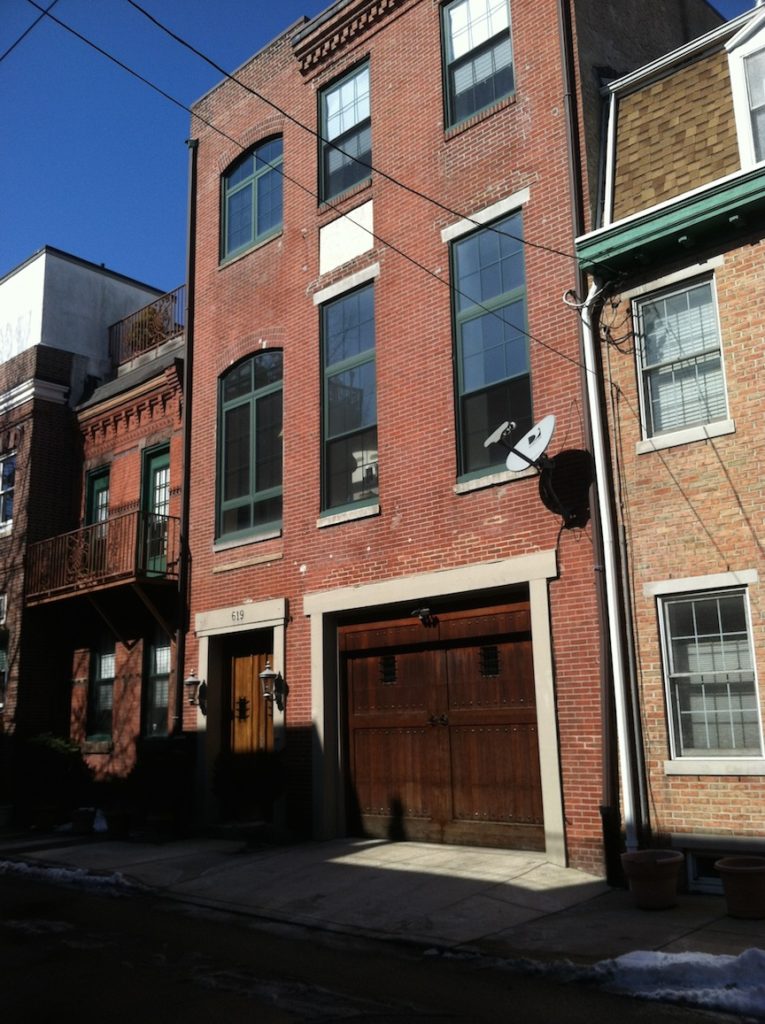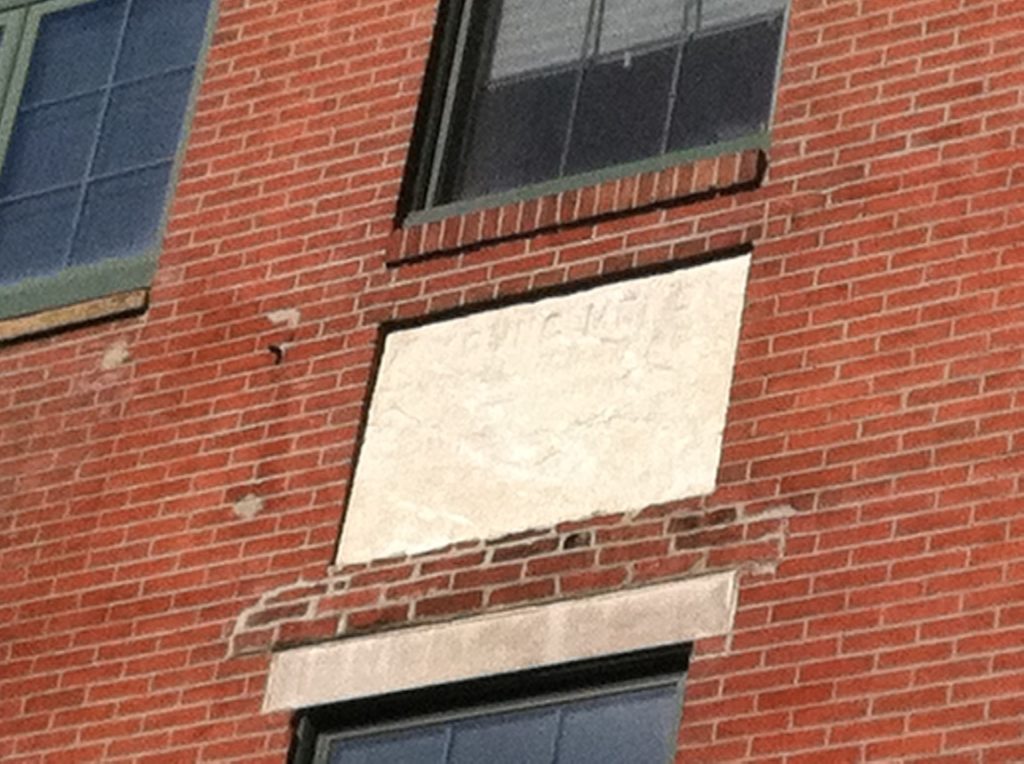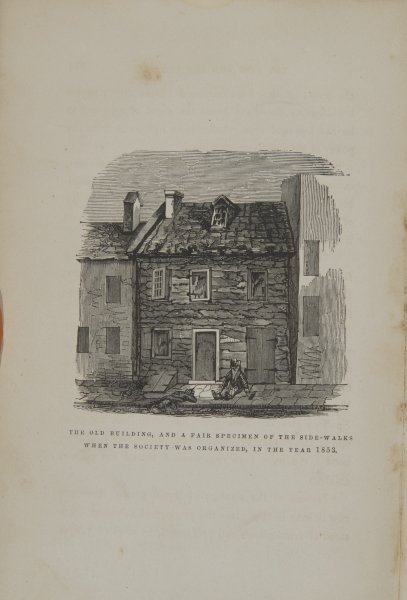The little stretch of houses on Kater Street between 6th and 7th Streets is relatively peaceful today given its proximity to South Street. However, its history is as a street of ill-repute and abysmal living standards. Originally called Bedford Street, this mixed bag of immigrant families earned a colorful description as “one of the poorest and most dangerous blocks in Philadelphia during the late 19th and early 20th century.” PhilaPlace goes on to describe the block as being littered with animal excrement and given over to violent crime. At the center of the block was salvation in the form of the Bedford Street Mission. The sketch below, taken from PhilaPlace, shows the Mission upon its original construction in 1853.
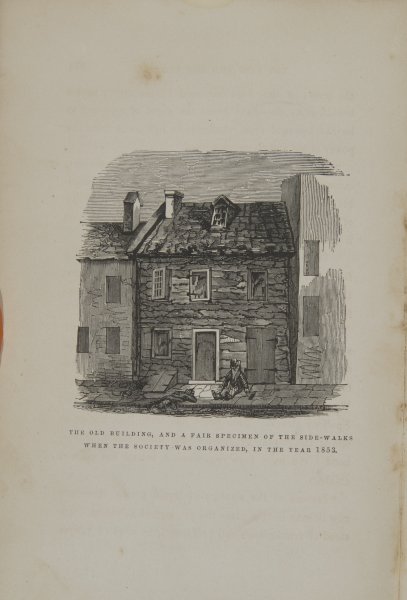
Originally established by a Methodist Episcopal group, the Mission’s goal was to provide food, shelter, education and clothing to the neighborhood’s desperately poor children. Just outside of a mission characterized by squalor and misery, the surrounding street was given over to drunkenness and brawling. The Mission attempted to bring salvation as is shown in the 1860 sketch here below, also taken from PhilaPlace.
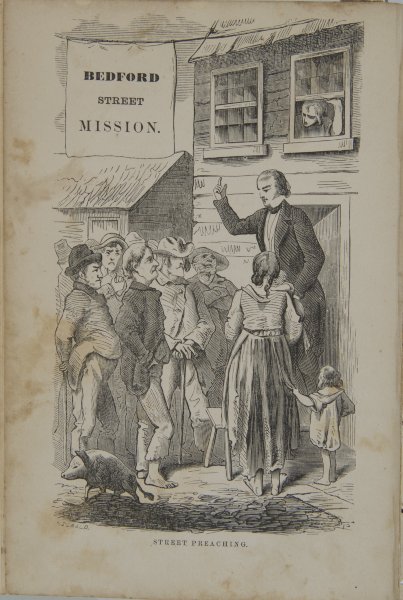
In 1869, Bedford Street became Kater but, as shown in the image below, taken from G.M. Hopkins’ 1875 Philadelphia Atlas, the Mission kept its name.
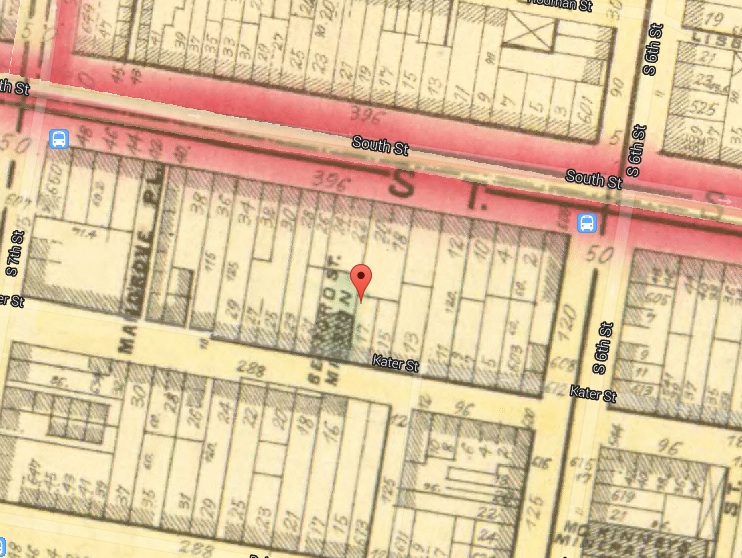
Conditions on the street would not improve significantly with the turn of the century. The continuing influx of penniless Jewish, Italian and Black residents made the Mission’s services absolutely essential. Indeed, the image here below, taken from the Philadelphia Department of Records, shows the Mission, now listed at 619 Kater St., filled to capacity in 1907.
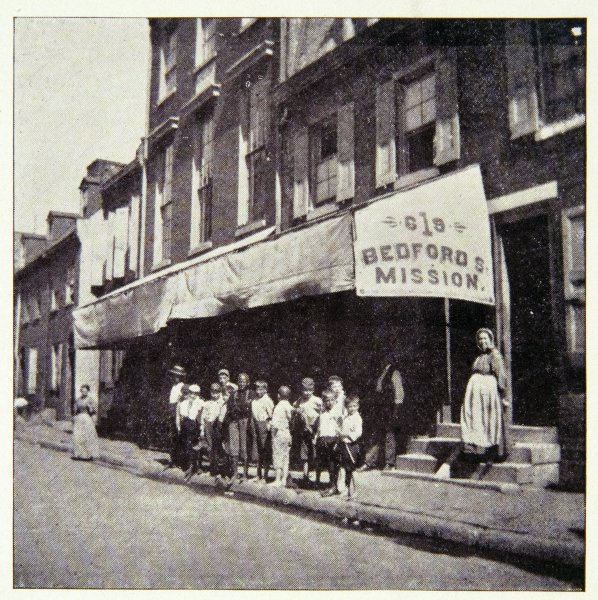
The original Methodist Bedford Mission would transition into the Quaker-run Bedford Center in the 1930s, according to Combios. As a ‘settlement house’, it continued to operate as a temporary shelter for the homeless but by the 1940s, Combios indicates, it would also become the very first Planned Parenthood site in Philadelphia. It is listed as such in the clipping here below, taken from a national directory of Planned Parenthood sites in 1945.

In spite of its bleak history, the lot is occupied today by a high-end townhouse. It seems likely that at least part of the structure dates back to the days of the Bedford Mission, as a faded sign reflects the property's history.
